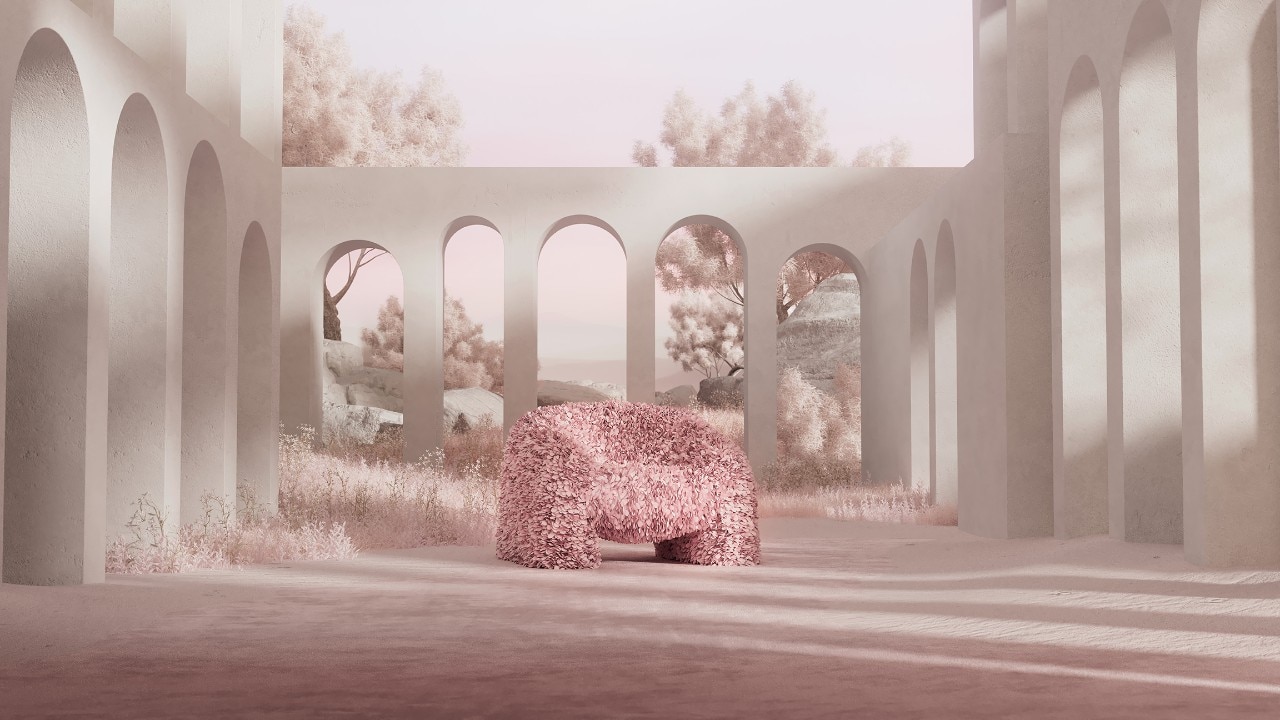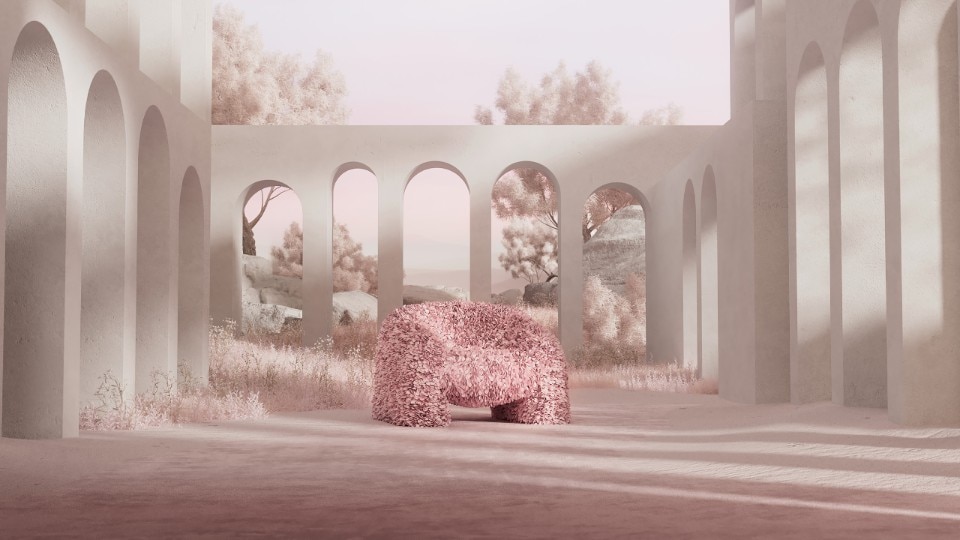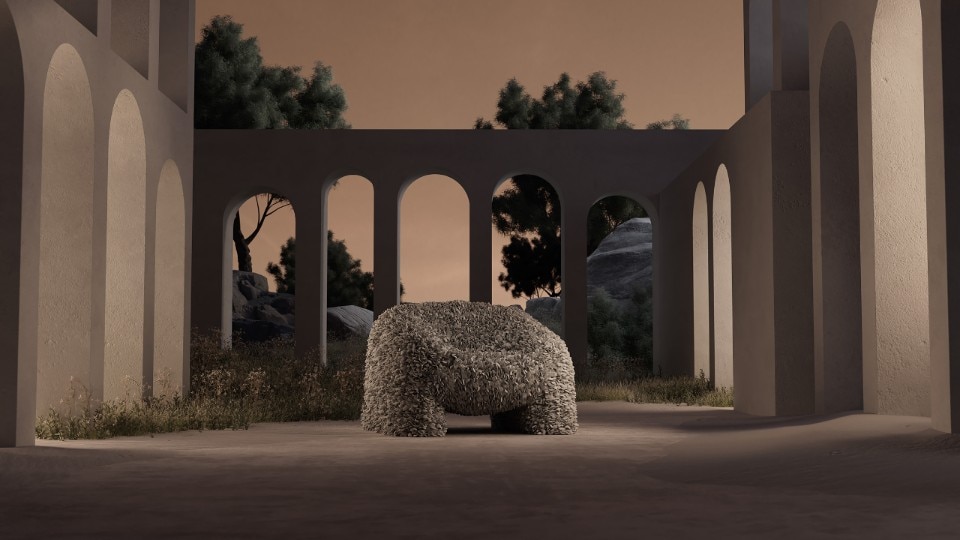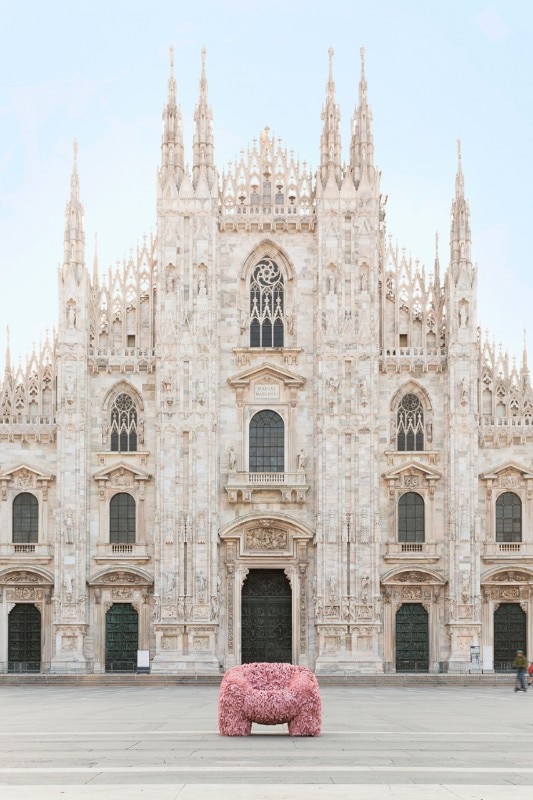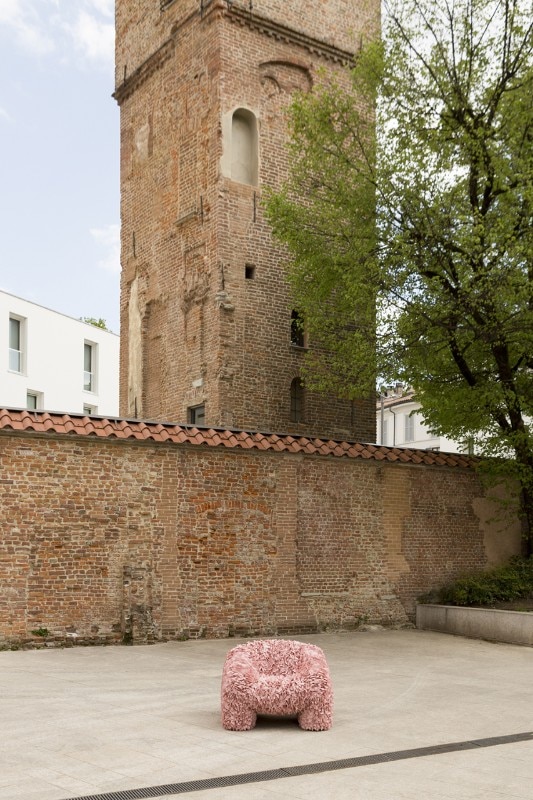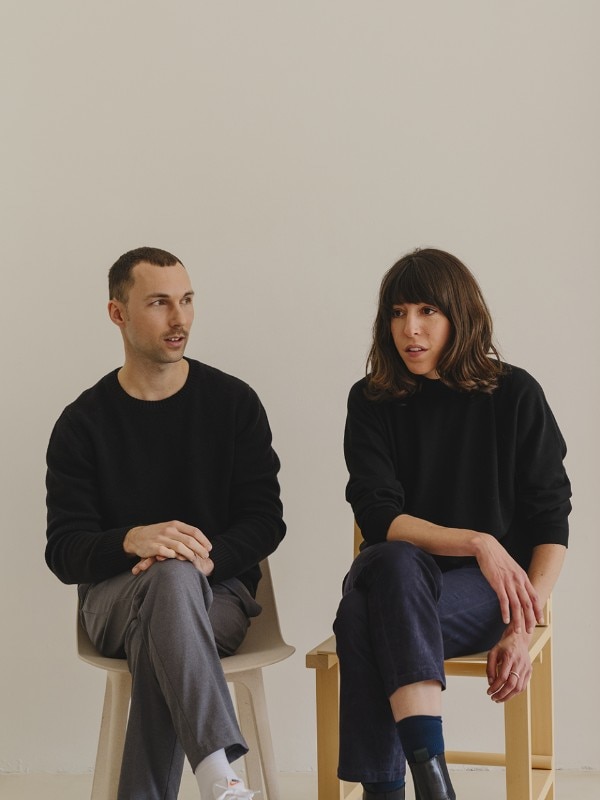The digital works by Andrés Reisinger, artist and 3D designer born in 1990, are easily recognizable: just have a look on his Instagram account to be transported into a dreamlike dimension with candy tones. One of his most famous projects is the Hortensia chair, initially created as a digital concept, now produced in a limited edition in collaboration with Moooi. The project was finalized with Julia Esqué, a product designer based in Barcelona, who for the occasion created Petal, a pink polyester fabric that, cut by laser, gave rise to the 30 thousand petals that make up the seat. We talked about this and more with Andrés and Julia.
In your research there is a focus on colour palettes with neutral tones. How does your creative process take place?
Andrés Reisinger: Human body, it’s shape, color and texture was always my main source of inspiration. It is the basis, foundation for the color palettes of my work. Regarding my creative process, I usually begin with throwing every idea, vision, form, shape onto my workspace, applying no limits to the process of creation, and further I switch to curating and filtering the material that’s been created.
Over the last year, the digital dimension has been crucial in keeping relationships alive. What is your relationship with the online world and social media in particular?
AR: My work has always been focused on digital which is organically linked to the online world and social media. Both co-exist within the same virtual realm, which makes it logical to befriend this dimension.
In these weeks NFT are so hot. You also sold ten pieces of virtual furniture in an NFT online auction for a total $450,000. What are in your opinion the opportunities NFTs can generate?
AR: For artists, for example, it is generating a possibility to create a first-hand link and sell an artwork in digital form directly to a global audience of buyers without using an auction house or gallery which allows them to keep a significantly greater portion of the profits they make from sales. Royalties can also be programmed into digital artwork so that the creator receives a percentage of sale profits each time their artwork is sold to a new owner.
Alongside the opportunities, the topic brings with it a number of critical issues. Among others, the environmental impact of the transactions and validation processes of NFTs. What is your opinion on this?
AR: Calculating carbon footprint based on transaction count fundamentally misunderstands how ethereum works. The blocks happen regardless of your transaction count. An ecological impact that NFT’s processes generate is insignificant compared to the damage that the current banking system is causing to the environment. Every argument on this is based on a superficial perception of the way those processes are operating.
The Hortensia Chair is probably your most recognisable work. How did you conceive it?
AR: I’ve been working with 3D softwares for more than 10 years now. With 3D tools, there are no limits. They give me the freedom to design whatever I can imagine, without problems of matter or development, and that helps me develop unpredictable processes. Hortensia emerged from that process.
Júlia Esqué: When Andrés Reisinger called me to join in the challenge of bringing the armchair to life, we didn't know how to make it or how long would it take. It was all about experimentation and iteration. A dialogue between technique, material and what industry has to offer: methods and processes. I started by intuition and through research and investigation I started to obtain responses. We went back and forth analyzing the results and its evolution until we had a convincing textile.
Dutch brand Moooi is going to produce it. Could you tell us more about this collaboration?
AR: I met Marcel, co-founder of Moooi, several years ago. We kept a good connection and followed each other's work since then. When me and Júlia felt the urge to amplify Hortensia’s exposure and accessibility, the first thing that popped into my mind was Moooi, as they channel the link between the art world and the product that felt exactly right for Hortensia chair.
JE: The chair has evolved through different stages during its life. Not only from virtual to physical, but also from an artisanal limited edition to an industrial product available worldwide. It feels like a natural evolution and we couldn't imagine a better company taking on when we presented the physical chair back in 2019.


